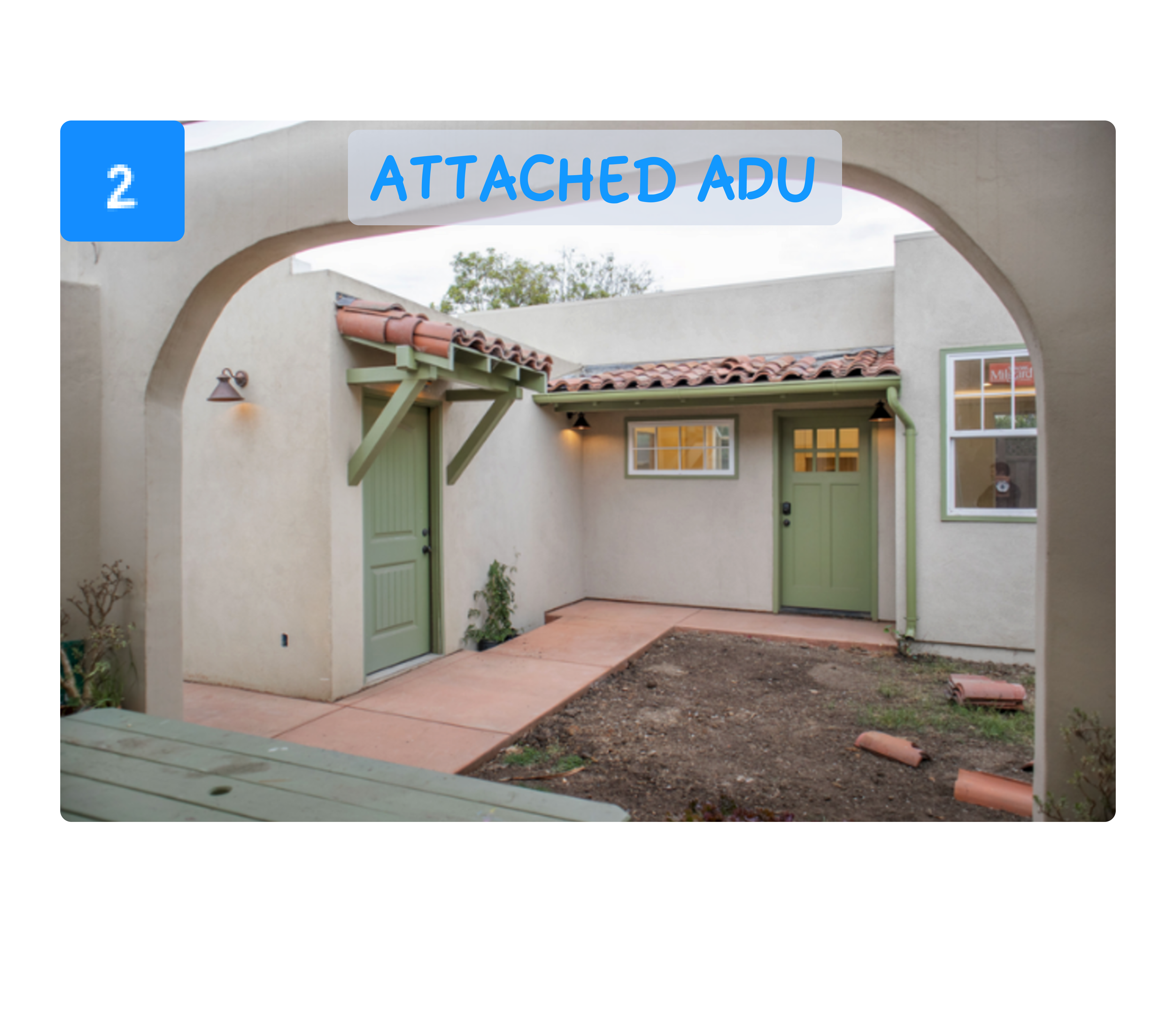All About ADU Design and Construction
What is an ADU?
An accessory dwelling unit or ADU is a home that is built on a parcel with an existing single family home. These are often converted from garages or other existing accessory spaces and are limited to smaller footprints, fewer bedrooms, and can also be built as separate apartments inside existing homes. They can be used to provide rental income, as guest spaces, family homes for elderly parents, or as bonus and office spaces. Junior ADUs or JADUs differ from typical ADUs in that they must exist within the existing home or an attached accessory structure such as a garage. They may share systems with the primary dwelling including bathrooms and can use efficiency kitchens. An ADU can be detached or converted from existing space and a JADU must be converted from existing space.
Number of ADUs allowed
Generally, state law allows for one ADU and one JADU on almost all single family residential lots. Single-family homeowners in California are eligible to add one ADU as well one JADU on their property if they meet the minimum space requirements for setbacks and lot coverage, as well as other regulations. JADU’s can only be built on owner-occupied properties. Owner occupancy requirements are waived for ADUs until 2025 in most cases, but still apply to JADUs.
Multifamily units are eligible for at least one ADU converted from non-living space, and up to 25% of the total number of multifamily units currently on the lot. They also are eligible for at least one and up to two detached units, granting that they meet height and setback requirements.
Basic ADU Regulations
- ADUs must have a sleeping area, a bathroom (private or shared), a kitchen, and a separate entrance. JADUs may share a bathroom with the primary home.
- ADUs are limited to one or two story structures or 16 feet in height in most cases with exceptions sometimes allowed for conversions of existing structures or with increased height allowances for two story ADUs. JADUs are limited to the height of the main residence.
- ADUs under 850 square feet are allowed outright by state law. New construction ADUs are limited in most cases to 1000 square feet for one bedroom or 1200 square feet for two bedrooms. JADUs are limited to 500 square feet and must be located in the primary home, either as a separate living space in the house or in the attached garage. In most municipalities, any ADU over 850 square feet might be subject to floor area restrictions determined by the underlying zone requirements. For cities still working with the state ADU law (without a local governing ordinance) maximum ADU sizes are 1,200 square feet for a new detached ADU and up to 50 percent of the floor area of the existing primary dwelling for an attached ADU (at least 800 square feet). Detached conversion ADUs are not subject to size requirements and are allowed 150 square feet to accommodate an ingress/egress.
Building an ADU, from ADU design to construction
Design
ADUs, like all residential construction, must meet state building code requirements, and some municipalities have additional design standards that limit height and square footage. Almost all ADUs are required to match the design but not the materials of the primary home. For example, a Spanish Style home built with adobe and clay roofing tiles may be able to precast concrete walls and use non-clay (most often metal or vinyl tiles) so long as the style matches. This varies by municipality and depends on the reason for requiring clay tiles, which are often used to prevent fires from spreading via ash fall. Similarly the windows of the primary home may be the original windows and single pane, this would not be required in your new ADU. The interior of the ADU doesn't need to match the style of the primary home. While standard interior layouts and appliances can save a great deal of money down the road, homeowners are able to design ADU interiors in whatever style that suits them. Additional regional building standards for fire, flooding, or earthquake hazards may also apply.
Flood zones: If you live near a creek, stream, or river (or in a coastal flood zone near a bay, estuary or coastline) you will want to check FEMA flood requirements which require elevation of habitable spaces above a base flood elevation determined by the 100 year flood events for the waterway you live near. In most cases, if you live in the floodplain your ADU will require at a minimum an 18 inch stem-wall with flood vents. Coastal ADU projects in coastal flood zones may require significant elevation as well as breakaway walls if the area beneath the ADU is enclosed. In many municipalities a certificate of no significant rise, or “no-rise” certificate is required when building in the floodway (this is usually in or adjacent to the active channel such as homes built on docks).
Seismic zones: In seismic and sloped hazard zones, foundations may require a geotechnical soils survey to specify foundation design standards. It is common for a grade-beam foundation to be required in order to comply with the higher structural requirement in these areas.
Tree Preservation: ADUs constructed near large trees such as redwoods or oaks must protect the root system of the tree during construction and foundation design must minimize excavations that could harm the root system. In these cases, a monolithic slab foundation is most commonly used.
Permits
Once you’ve selected a final design that works for your needs, your site, and meets regulatory standards, you can apply for the necessary permits which will vary by city. In most cases, a simple building permit will be enough to get your ADU construction started, and, if your project is built to the permitted standards, this will be followed with a certificate of occupancy. In some cases additional review is necessary when your ADU design requires a floodplain development permit or when design varies beyond what is allowed under the discretionary permit.
Construction
The construction process will often require signoff approval from the building department during construction stages for elements that will be hidden by future construction such as the foundation, utilities, and framing. Our Standard Materials Specs include:- Structural design according to CBC standard construction practices
- Interior wall finish: drywall (5/8")
- Flooring: vinyl flooring planks (low VOC) and tile flooring in bathrooms
- Roofing: asphalt shingles (or match existing home)
- Exterior finish: lap siding, vinyl siding (or match existing home)
- Kitchen cabinetry: we design in standard dimensions that fit most brands (Ikea, Home Depot, Lowe's)
- Foundation: slab on grade or stem walls with crawl space
- Windows: Home Depot, Lowe's or Marvin All Ultrex
- Doors: standard heights (6'8") and widths (30-36")
- HVAC: Mini-split (Heat/AC ductless)
Site preparation including demolition if needed, and excavation
Excavation of your site for foundation and utility connections requires access for grading equipment and materials. This process is generally done at the beginning of the dry season and may require a stormwater control plan depending on the location and extent of the project. This is a messy part of the project and may require additional space for staging materials.
Foundation
The type of foundation required will depend on site conditions and your ADU design. Typical foundation types include monolithic slab, stem-wall, and grade beam.
- Poured slab foundations are common for garage conversion projects as most garages already have a concrete slab that requires minimal work to upgrade for habitable space.
- Stem-wall foundations are the most common of the foundation types for new ADUs because they are cost effective and easy to build. They also have the added benefit of providing access beneath the house for maintenance.
- Grade beams are the least common of the foundation types due to cost.
.jpg?width=4032&name=IMG-4665%20(1).jpg) |
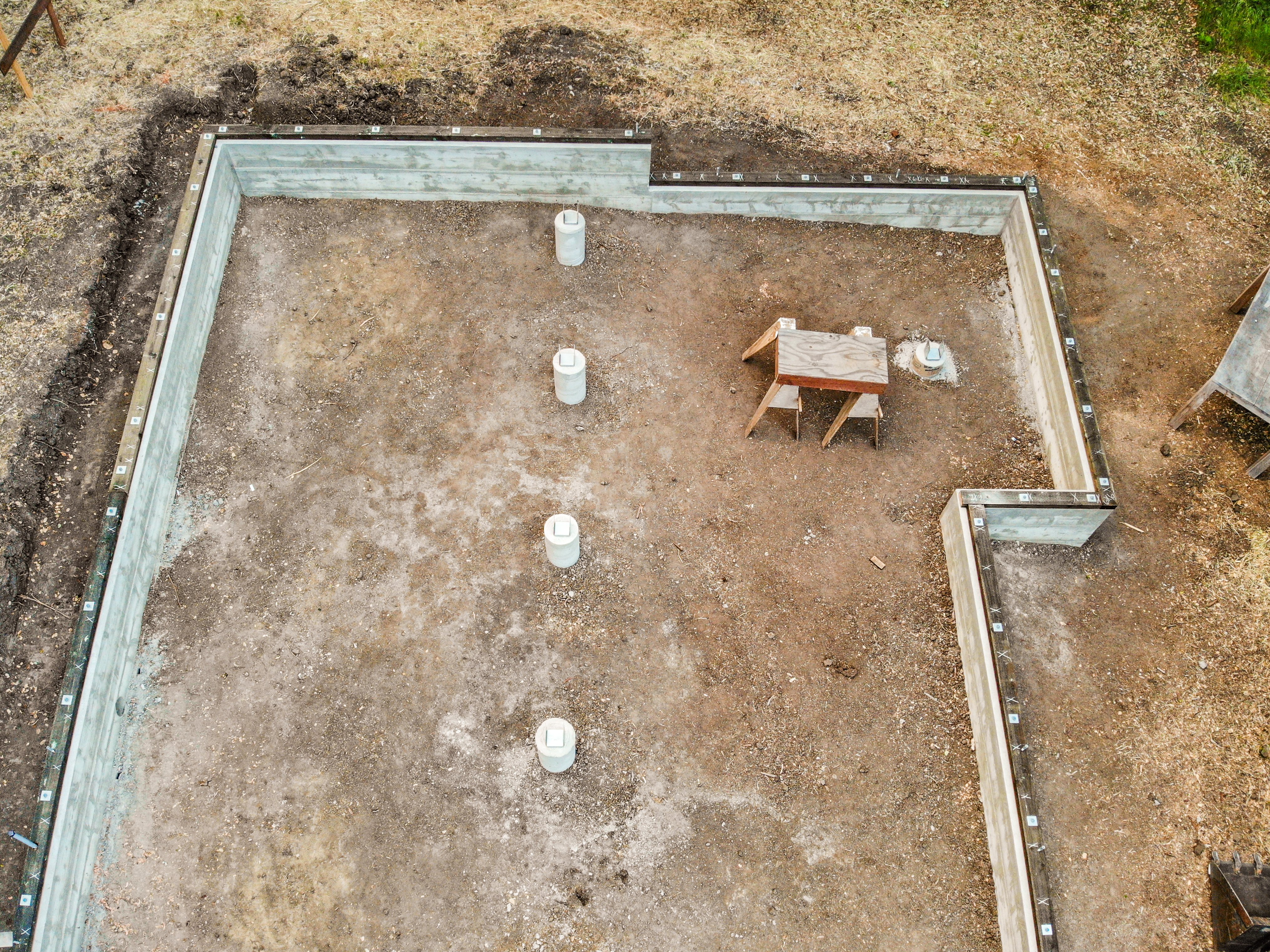 |
Left, site preparation for a slab foundation. Center, foundation plan example. Right, stem-wall foundation.
Framing, Encasing, and Sub-flooring
- Most ADUs are stick-built wood framing with standard construction methods.
- Some companies offer prefabricated steel frame kits that homeowners and builders can install onsite, other companies offer ready-built modular ADU homes that can be delivered on site and can include materials such as precast concrete walls.
- Sub-floors are placed so that the wall framing sits on top of the subfloor.
- Insulation is placed.
- Mechanical, electrical, and plumbing is roughed in.
- Encasing or Dry-in entails sheeting the framing with plywood so that the siding can be installed. Once the project rough-in MEP and insulation has been inspected, the project has reached the "OK to cover" stage. See the images below for examples of the framing stages you might expect.
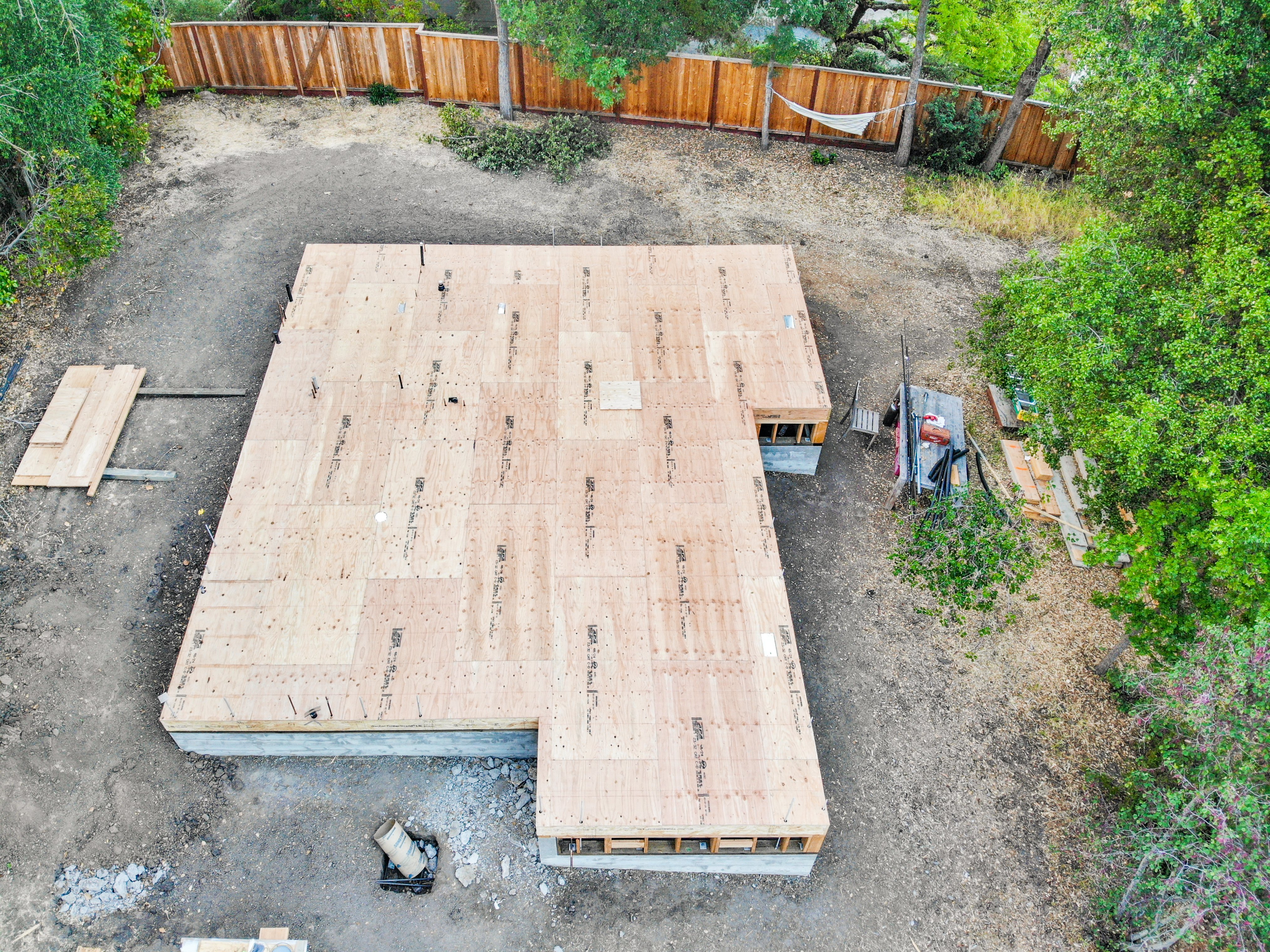 |
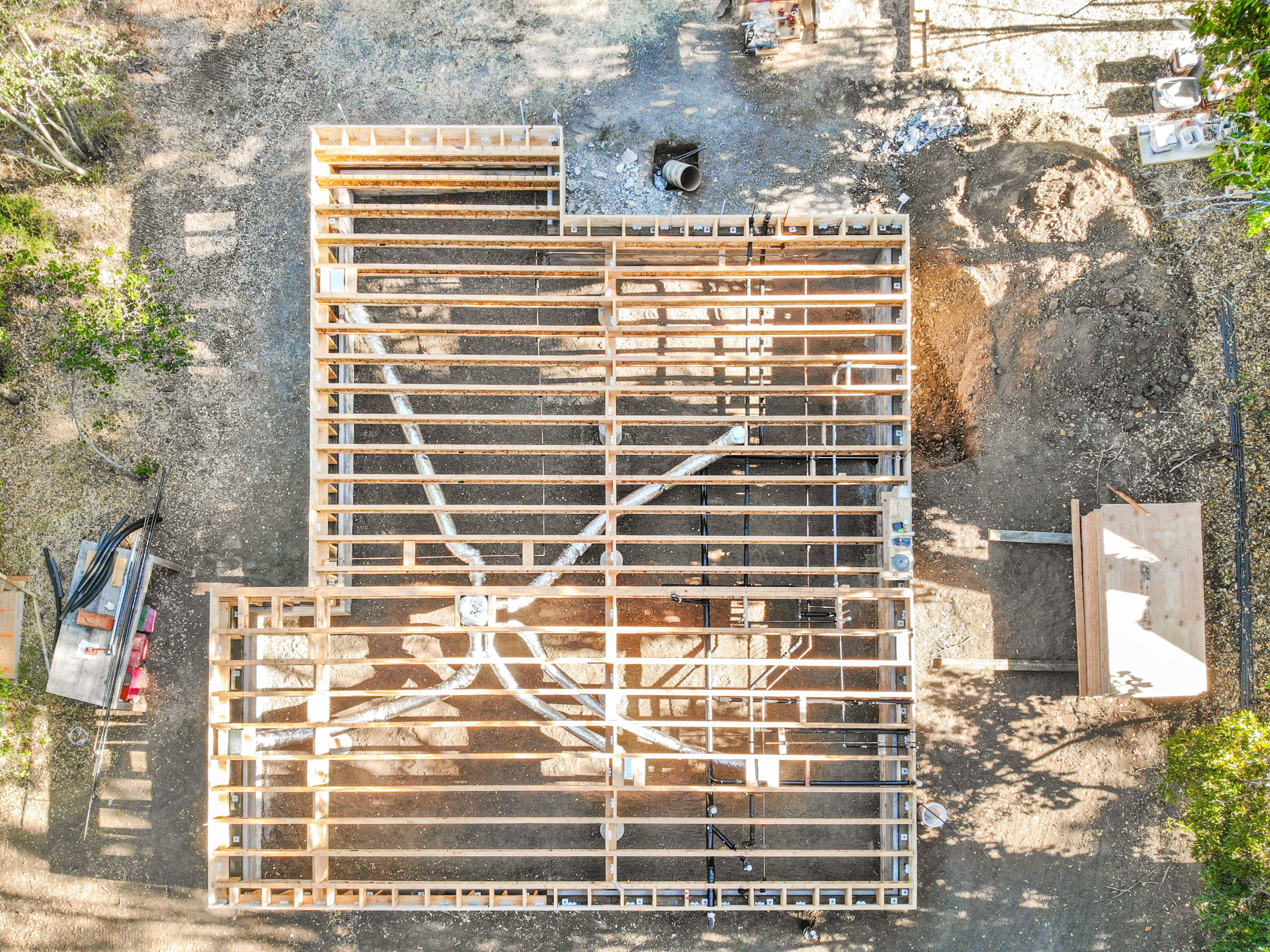 |
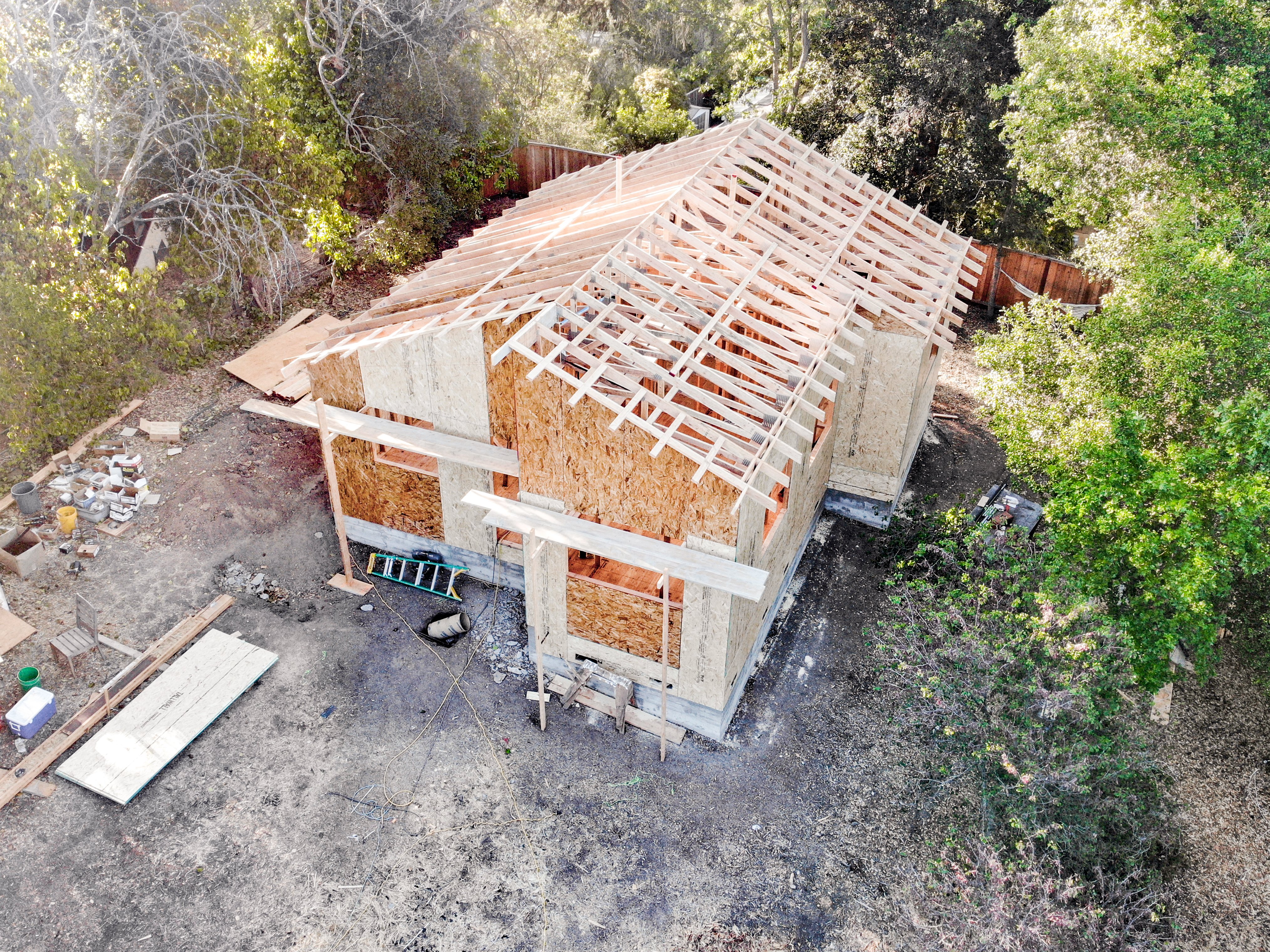 |
Finishing
- Drywall hanging, taping, and texturing
- Hang doors and windows
- Interior painting
- Flooring
- Exterior finishes
- Final MEP including fixtures and covers
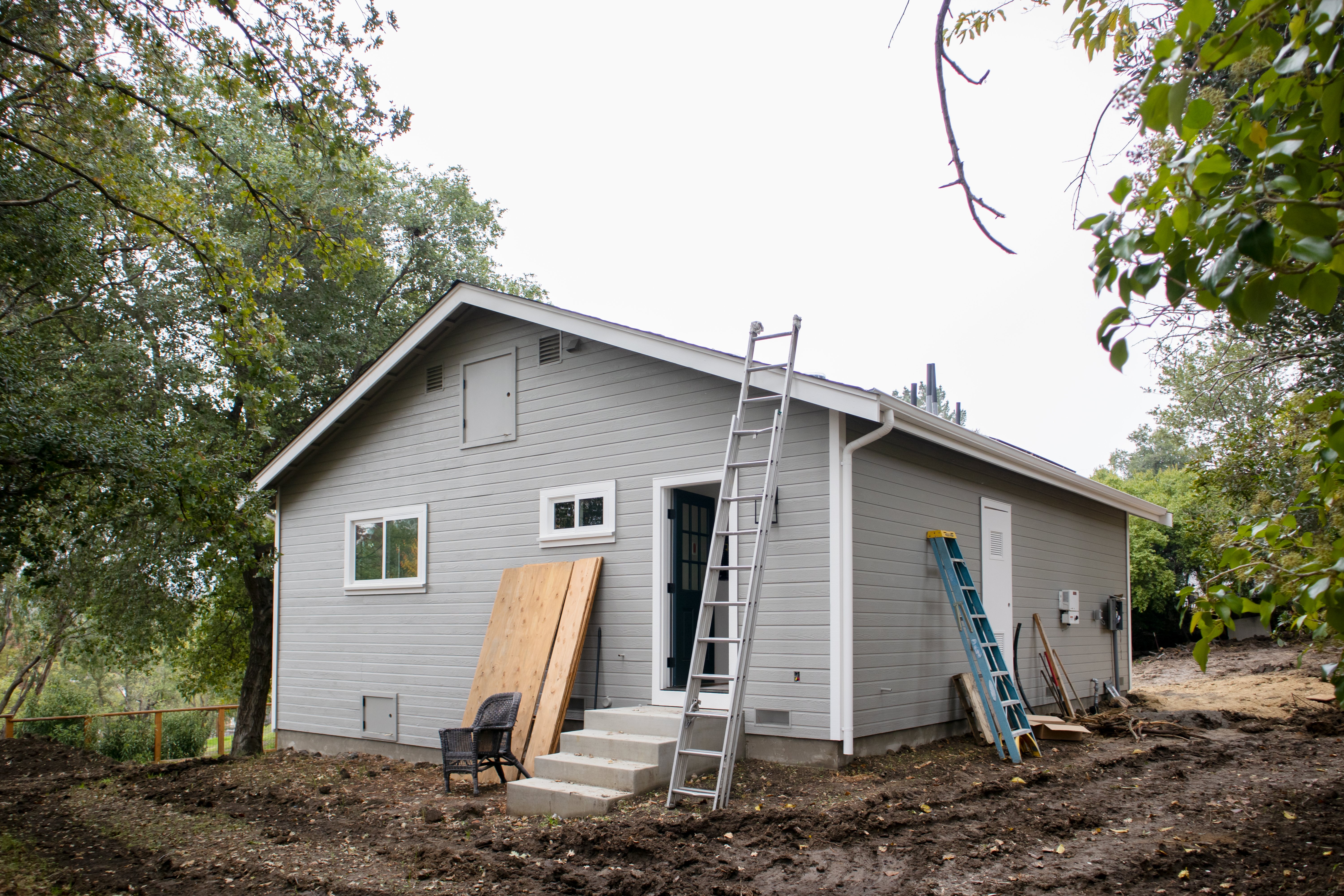 |
 |
.jpg?width=4032&name=PXL_20211121_204206261%20(1).jpg) |

